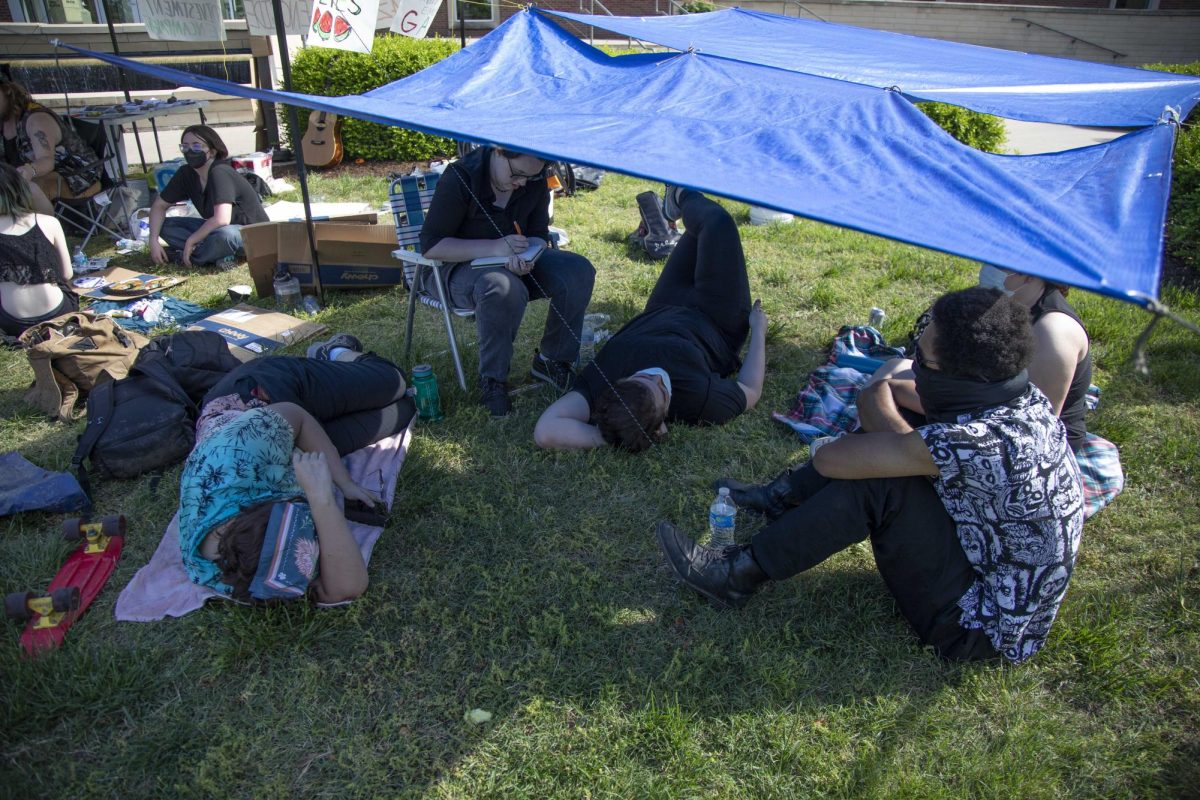Emotions evoked by Alzheimer’s expressed through spoken-word ballet
May 6, 2012
Alzheimer’s disease can affect the surrounding family as much as the diagnosed. For one family, creating an experimental ballet was a way to cope with watching a family member develop the disease.
“A Life Unhappening” became a healing process for Adam Stone, writer and producer, and his family as he watched his mother deal with Alzheimer’s.
The ballet was performed Friday at Shryock Auditorium as a preview to its May 11 premiere in St. Louis. The proceeds of the show will benefit the St. Louis Chapter of the Alzheimer’s Association.
Advertisement
Unlike a traditional ballet, where the dance is choreographed to music, Stone created a ballet in which the dance is choreographed to a pre-recorded spoken-word audio track.
Through the dialogue, the nine-scene narrative unfolds as dancers channel their characters’ emotions while the monologues are spoken.
For about one hour, each scene features an aspect of Stone’s experience, from a diagnosed mother struggling to hang on to her memories, a son devoting himself to support his mother and a granddaughter trying to understand the experience.
The backgrounds and lighting, which were a collaboration between Stone and Richard Cadena, the lighting designer, reflect details and emotions within the dialogue and create a bittersweet atmosphere.
Stone, a 1990 SIUC alumnus with a Bachelor of Arts in English and a 2001 graduate from SIU School of Law, said he believes his production may be the first full-length, spoken-word ballet ever performed.
“Since there wasn’t really a template to follow, I was just trusting my instincts,” Stone said. “I was trying to create a narrative that was true to the experience of what we went through as a family.”
Alzheimer’s disease is one form of dementia that gradually gets worse over time and affects memory, thinking and behavior, according to the U.S. National Library of Medicine.
Advertisement*
One in eight older Americans has Alzheimer’s disease, which is the sixth leading cause of death in the United States and the only cause in the top 10 that cannot be prevented, cured or slowed, according to the Alzheimer’s Association.
“My mother, who suffered from Alzheimer’s, passed away in 2009,” Stone said. “Being a writer, I knew I was going to cope with it somehow through writing.”
Working alongside Stone during the creation of “A Life Unhappening” is his daughter, Chelsea Stone.
Chelsea Stone, a 2011 SIUC alumna with a Bachelor of Arts in English, has been dancing for 18 years and choreographed the ballet to her father’s dialogue.
“The storyline means a lot to me,” she said. “At first I would get so emotional listening to the words my father had written that I couldn’t choreograph, but lately, now that it has all come together, I love how the dancers express the emotions, and I can see my family and my situation within the characters.”
She said her inspiration came from trying to sync the choreography to the emotions each scene was about.
The role of Sara-Jo, which portrays the granddaughter character and most relates to Chelsea Stone, was played by Hallie Chametzky, a freshman at Carbondale Community High School.
Chametzky said though it was difficult at first to dance to dialogue instead of music, the words over time helped to find answers to her character’s emotions, and those answers helped translate the emotion into her dancing.
Chance Marshaun Hill, a senior at Southeast Missouri State University studying dance, played Thomas, a son whose mother has Alzheimer’s, and he agreed with Chametzky.
He said it was difficult to perform to only words in the beginning, but it made him a different dancer.
“Instead of using music to portray emotion, we found emotion within ourselves through what our characters were speaking to us in the dialogue,” Hill said.
While the dancers had to learn to perform to dialogue for the first time, the Stone family was also exploring uncharted territory.
The inspiration for the ballet came during the last week of his mother’s life while he sleeping on the floor of the room she was staying in, Adam Stone said.
“Half asleep, I looked up and saw two nurses who came in to reposition her,” he said. “There was something so artful in the way they moved together to care for her.”
He said writing is his outlet and can be healing, and he hopes that it can be a healing experience for anyone who comes to see the ballet.
Chelsea Stone said she hopes anyone who has dealt with Alzheimer’s, or even those who haven’t, can see its effects through this performance.
The premiere in St. Louis will be broadcast on the higher learning channel so that everyone can learn about Alzheimer’s and take something away from the ballet, Chelsea Stone said.
“The family and everyone who surrounds the person diagnosed with Alzheimer’s disease is affected by it, and I want those people to know they’re not alone,” she said.
Advertisement








